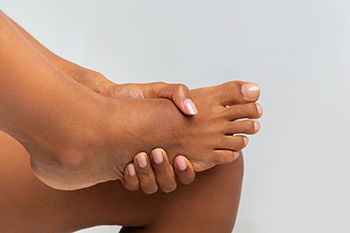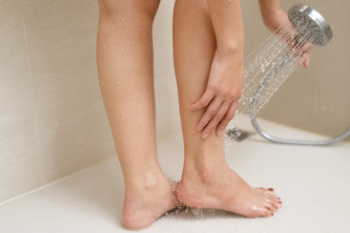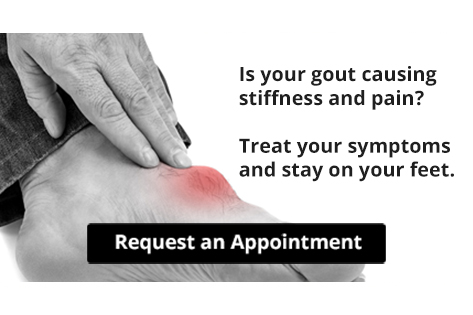Connect With Us
Blog
Items filtered by date: September 2025
Exercises to Strengthen Your Feet

Strong feet provide stability, balance, and support for daily activities and sports. Simple exercises such as dorsiflexion, which involves pulling the foot upward, and plantarflexion, or pointing the foot downward, help build strength in key muscles. Inversion, where the sole turns inward, and eversion, where the sole turns outward, further improve flexibility and stability while reducing the risk of injury. A chiropodist can guide you in performing these movements correctly and design a personalized exercise plan that addresses your unique foot structure and needs. Regular strengthening exercises improve endurance and mobility, helping you stay active and pain-free. If you have foot pain or if you are looking to improve your foot strength and function, it is suggested that you consult a chiropodist for expert guidance and professional care.
Stretching and strengthening your feet is very important for maintaining your foot health. If you would like to learn more about exercises for your feet, please consult with one of our chiropodists from West Toronto Foot & Ankle Clinic Inc. . Our chiropodist can help you maintain the health of your lower limbs and your mobility.
There are a variety of relatively easy-to-do exercises that can boost the strength, flexibility, and mobility of your feet, as well as relieve foot pain.
Strength exercises:
- Toe splay - Spread the toes apart and hold for several seconds; improves control over toe muscles
- Toe curls - Scrunch up a towel with your toes; strengthens the flexor muscles
- Marble pickup - Pick up marbles with your toes; strengthens the muscles on the undersides of the feet and toes
- Walking on sand - Stretches and strengthens feet and calves
Flexibility exercises:
- Heel raises - Raise the heels while keeping toes on the ground
- Toe point - Raise the heels while pointing the toes, keeping just the tips of toes on the ground
- Toe curl - Raise the heels while curling the toes inwards, keeping just the tips of toes on the ground
- Big toe stretch - Use your hands to gently stretch your big toes up, down, and to the side
Exercises for foot pain:
- Toe extension - Gently pull the toes up towards the ankle and hold for several seconds
- Ball roll - gently roll a golf or tennis ball underneath the arches of the feet
If you have any questions please feel free to contact our office located in Toronto, ON .
Exploring the Causes of Toe Pain

Toe pain can have many causes, ranging from mild irritation to more serious conditions. Ingrown toenails are a frequent culprit, as the nail grows into the surrounding skin and creates pain, swelling, and sometimes infection. Bunions can also cause soreness when the big toe shifts out of place, leading to pressure and discomfort in shoes. Arthritis is another source, often producing stiffness and aching in the toe joints. Additionally, gout may trigger sudden, intense pain, usually in the big toe, due to the buildup of uric acid crystals. Even simple issues like corns, calluses, or wearing shoes that do not fit properly can contribute to ongoing toe pain. Because the causes vary widely, it is important not to ignore symptoms. If toe pain is interfering with your comfort or mobility, it is suggested that you visit a chiropodist for an accurate diagnosis and effective treatment.
Toe pain is common and can have a variety of causes. Causes can range from a broken toe to an ingrown toenail. Many types of toe pain can be corrected, but any toe pain that inhibits your activities for an extended period should be discussed with a chiropodist. If you suffer from toe pain, please consult with one of our chiropodists from West Toronto Foot & Ankle Clinic Inc. . Our chiropodist can help you maintain the health of your feet.
Common Causes of Toe Pain
- Trauma or fracture
- Cuts, sores, or bruises
- Rheumatoid arthritis
- Gout
- Turf Toe
- Morton’s neuroma
- Blisters
- Corns
- Bunions
- Hammertoes
- Ingrown toenails
- Plantar warts
- Athlete’s Foot
Symptoms of Toe Pain
- Toe deformity
- Burning
- Numbness
- Toenail deformity
- Wart or ulcer
- Swelling
- Redness
When to See a Chiropodist
- Bleeding or severe swelling
- Trauma, such as a broken bone
- Discoloration or extreme swelling
- Inability to bear weight
- Persistent pain
- Wounds that won’t heal
Diagnosis of Toe Pain
A chiropodist can conduct a thorough examination of the painful toe or toes in order to determine the best course of treatment. The exam may include assessing the tenderness of the area, taking an X-ray or other diagnostic test, or assessing your gait and range of motion. A discussion of what led to the advanced pain issue may follow. Included will likely be a health history, as well as a list of medications you are taking and other previous injuries you may have sustained.
Treatment for Toe Pain
With such a wide range of possible causes for toe pain, treatment can be varied in scope and length. Sometimes, the chiropodist will recommend lifestyle and activity changes. In cases of trauma or other injuries, X-rays or imaging tests will likely be used to determine the severity of the problem, particularly if any bones have been broken. Treatment may also include injections of pain-relief medication or anti-inflammatory drugs. Certain injuries will require the splinting, bracing, or wrapping of injured toes. Orthotics or special shoes may be prescribed in cases of bone deformities and gait issues. Removal of warts, calluses, and corns may be needed. In other cases, such as with patients who have diabetes or rheumatoid arthritis, ongoing treatment may be required to avoid more serious problems.
If you have any questions please feel free to contact our office located in Toronto, ON .
Exploring the Many Causes of Foot Pain

Foot pain can come from a wide range of conditions, affecting bones, joints, muscles, nerves, or skin. Some discomfort develops gradually due to overuse, such as in plantar fasciitis, tendinitis, or stress fractures. Structural issues like flat feet or high arches may place strain on specific areas, leading to chronic soreness. Injuries from sports or accidents can cause sprains, bruising, or broken bones. Nerve-related problems, including neuromas or pinched nerves, often produce tingling or burning sensations. Skin conditions like corns, calluses, or fungal infections can also lead to localized pain. Wearing ill-fitting shoes, long periods of standing, and certain medical conditions like arthritis or diabetes may increase the risk of ongoing foot problems. A chiropodist evaluates symptoms, examines the foot, and offers care tailored to the cause. If your foot pain continues or interferes with daily life, it is suggested you seek professional evaluation from a chiropodist.
Foot pain can have many causes. To receive an accurate diagnosis and treatment for your foot pain, please consult with one of our chiropodists from West Toronto Foot & Ankle Clinic Inc. . Our chiropodist will assess your condition and provide you with quality foot and ankle treatment.
Causes
There are a variety of different conditions that can cause foot pain, including:
- Plantar fasciitis
- Deformities, such as bunions or hammertoes
- Injuries to the muscles, bones, tendons, or ligaments in the feet
- Arthritis
- Flat feet
- Ingrown toenails
Symptoms
The type and location of your foot pain can help determine what may be causing it and what type of treatment options are best for you.
Common types of foot pain include:
- Heel pain
- Arch pain
- Toe pain
- Ball of foot pain
- Pain that has a stabbing, burning, or tingling quality
- Pain that is constant, intermittent, or that gets better or worse depending on the situation
Diagnosis
A thorough medical history and physical examination of your feet will be required to determine a diagnosis. Imaging studies, such as X-rays or MRIs may be performed to rule out or confirm certain diagnoses.
Treatment
Treatment will depend on the cause of the pain. Common treatments for foot pain include resting, icing, compressing, and elevating the affected foot, wearing orthotics, or taking anti-inflammatory medications.
If you have any questions please feel free to contact our office located in Toronto, ON .
The Importance of Good Foot Health

Healthy feet are essential for overall well-being, mobility, and quality of life. Practicing everyday foot care can protect your feet and prevent common problems. It is important to examine your feet regularly for changes, wear shoes that fit properly, in addition to washing and drying your feet daily to avoid infections, and trimming toenails correctly to prevent ingrown nails. Simple routines like these help keep feet strong and comfortable. A chiropodist can provide professional care, address concerns early, and offer guidance tailored to your needs. If you have developed foot issues, it is suggested that you visit a chiropodist who can treat various foot conditions, and guide you on effective daily foot care routines.
Caring for your feet is not just something done at the chiropodist’s office. Good foot care starts at home. If you would like to learn more about daily foot care practices, please consult with one of our chiropodists from West Toronto Foot & Ankle Clinic Inc. . Our chiropodist can help you maintain the health of your lower limbs and your mobility.
There are many things that you can do at home to help care for your feet, including:
- Wearing shoes and socks that fit properly
- Washing the feet daily with soap and water
- Drying the feet thoroughly
- Applying moisturizer to the soles and heels of the feet
- Taking a walk and exercising the feet regularly
- Doing foot stretches and strengthening exercises
A chiropodist can help figure out a manageable foot care routine for you to keep your feet healthy. If you have any questions please feel free to contact our office located in Toronto, ON .
Gout Pain Can Be Managed
Risk Factors and Symptoms of Heel Spurs

Heel spurs are bony growths that develop on the underside of the heel, often extending toward the arch of the foot. They can cause sharp pain when standing in the morning and a dull ache throughout the day. Swelling, heat in the heel, and tenderness that makes walking barefoot uncomfortable are other symptoms. Not everyone with a heel spur experiences symptoms. Risk factors for developing heel spurs include frequent running or jumping, walking on hard surfaces, and trauma to the heel. Aging, being female, carrying excess weight, and wearing shoes that do not provide proper support are other factors. Certain medical conditions, such as reactive arthritis, ankylosing spondylitis, and plantar fasciitis, can also increase the likelihood of developing a heel spur. A chiropodist can assess heel pain, recommend orthotics, suggest footwear adjustments, and provide strategies to relieve discomfort. If you have heel pain, it is suggested that you schedule an appointment with a chiropodist for appropriate treatment.
Heel spurs are bony outgrowths from calcium deposits. They occur at the back of the heel bone or underneath the heel bone and usually form in response to chronic irritation of the Achilles tendon or plantar fascia. They are often asymptomatic, but if you are suffering from heel pain, please consult with one of our chiropodists from West Toronto Foot & Ankle Clinic Inc. . Our chiropodist can help you maintain the health of your lower limbs and your mobility.
Symptoms of Heel Spurs
- Tenderness
- Heel pain
- Pain when walking
- No symptoms
Diagnosis
Since heel spurs are often asymptomatic, they are usually only diagnosed when they are found on the heels incidentally during an X-ray taken for another reason. Nevertheless, if you have heel pain, and particularly if you have plantar fasciitis or Achilles tendonitis, it may be worth it to see if you have heel spurs too.
Treatment
Unless they are causing symptoms, heel spurs typically don’t require any treatment. When they are symptomatic, treatments are typically conservative. They may include resting and icing the affected foot, taking anti-inflammatory medications, and wearing orthotics or supportive footwear, especially while exercising.
If you have any questions please feel free to contact our office located in Toronto, ON .
Blog Archives
- December 2025
- November 2025
- October 2025
- September 2025
- August 2025
- July 2025
- June 2025
- May 2025
- April 2025
- March 2025
- February 2025
- January 2025
- December 2024
- November 2024
- October 2024
- September 2024
- August 2024
- July 2024
- June 2024
- May 2024
- April 2024
- March 2024
- February 2024
- January 2024
- December 2023
- November 2023
- October 2023
- September 2023
- August 2023
- July 2023
- June 2023
- May 2023
- April 2023
- March 2023
- February 2023
- January 2023
- December 2022
- November 2022
- October 2022
- September 2022
- August 2022
- July 2022
- June 2022
- May 2022
- April 2022
- March 2022
- February 2022
- January 2022
- December 2021
- November 2021
- October 2021
- September 2021
- August 2021
- July 2021
- June 2021
- May 2021
- April 2021
- February 2021
- January 2021

